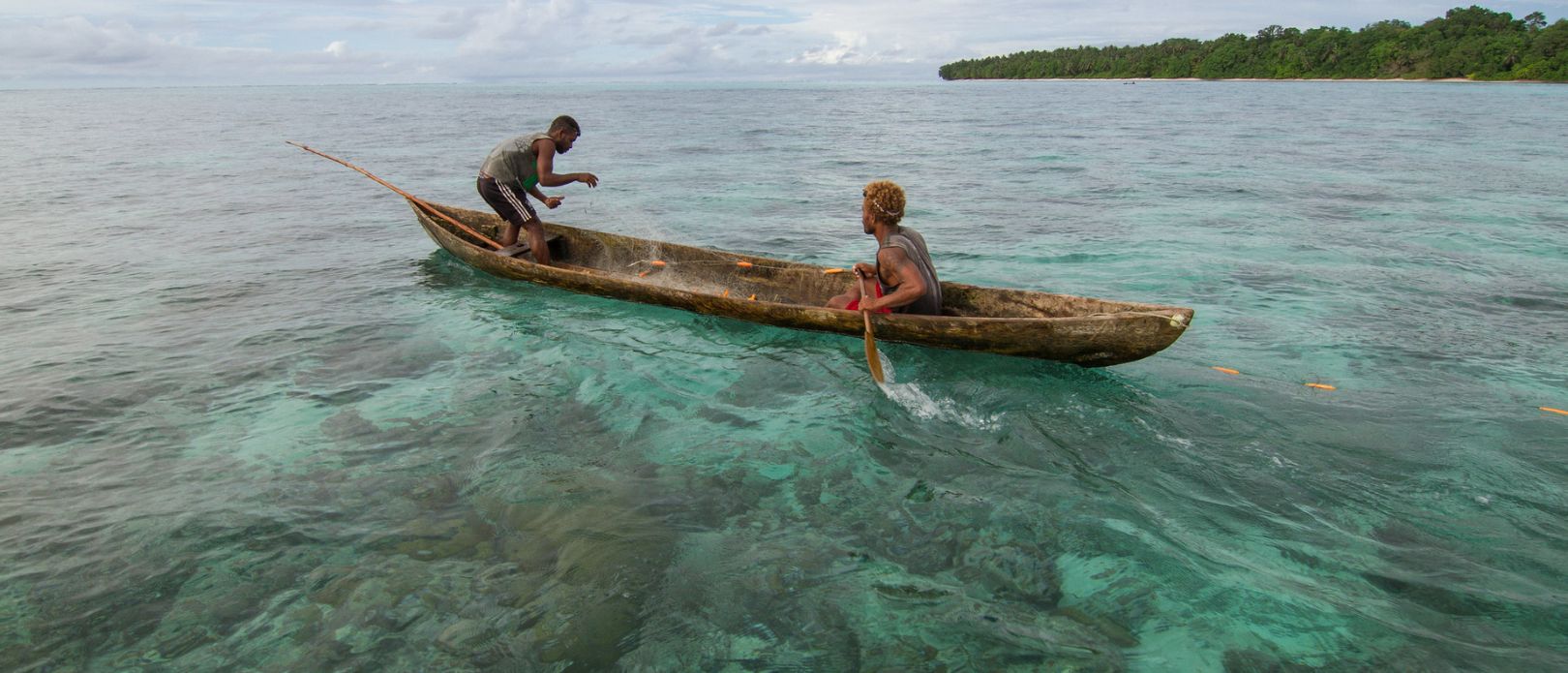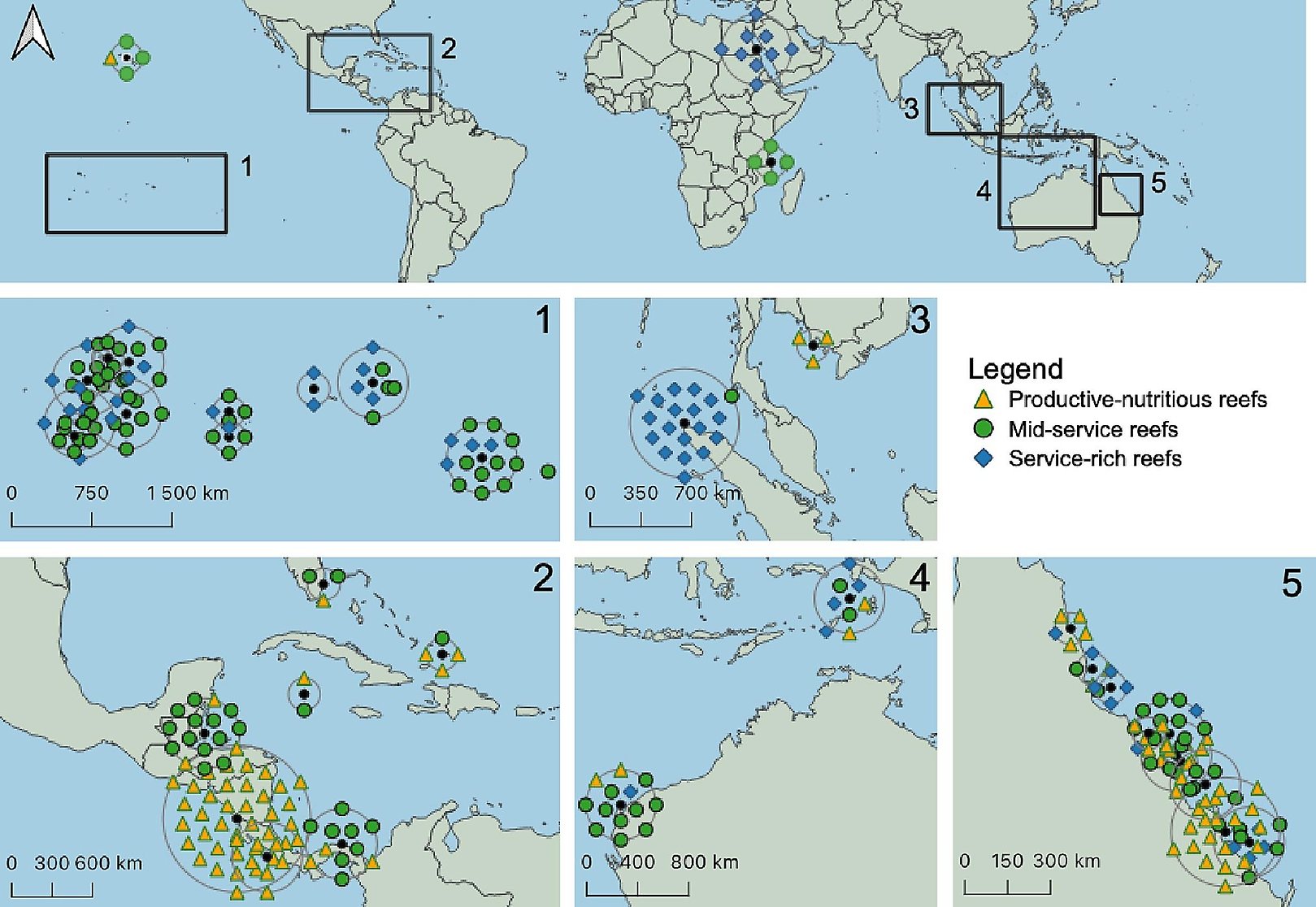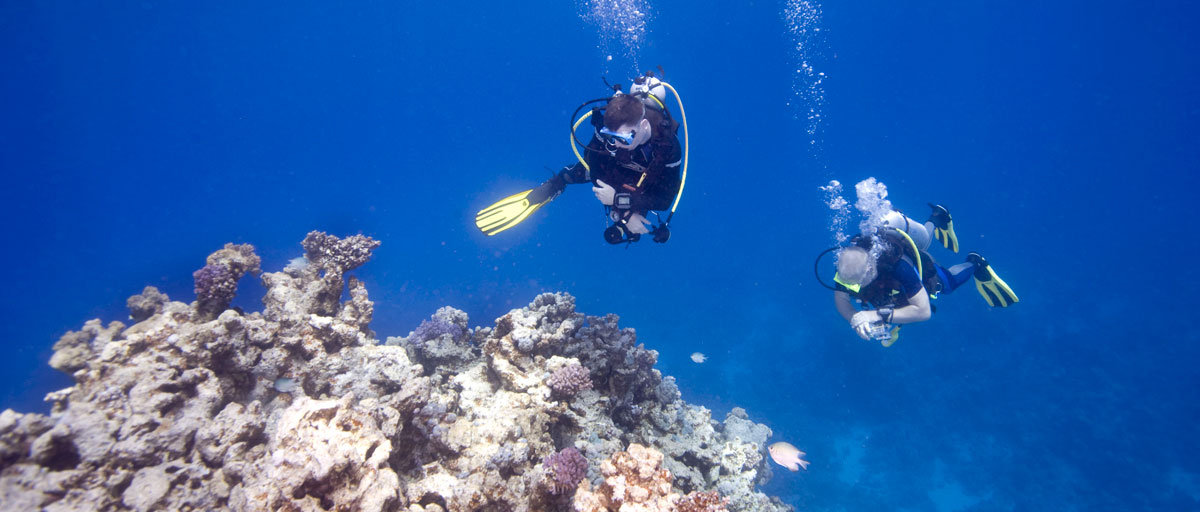Marine ecosystems
Study maps and groups threatened coral reef ecosystem services

Two fisherman put out a net to catch reef fish. Photo: Filip Milovac/Worldfish via Flickr.
New study investigates how coral reef ecosystem services are linked and distributed in 18 countries around the world
- The study identifies trade-offs and synergies among seven different ecosystem services produced by coral reefs
- Three clusters of reefs were revealed, which deliver different sets of ecosystem services depending on fish species richness and biomass productivity
- Appropriate management action differs among the reef clusters and must match both social and ecological context
Recently, Florida and the Gulf of Mexico have suffered from record-high ocean temperatures, which have already bleached and killed a substantial number of corals. This stress and other local threats, such as overfishing and pollution, are bad news for coral reefs and the many millions of people around the world depending on their ecosystem services. But not all reefs are the same. They tend to provide different mixes of ecosystem services, and a better understanding of this is important for putting appropriate management and policies in place.
What we did was to investigate trade-offs and synergies among seven different ecosystem services produced by rocky and coral reefs, while also looking into the social-ecological conditions under which various combinations of these services occur.
Centre researcher Kara Pellowe
Seven in a bundle
This is the backdrop of a new study by Centre researchers Kara Pellowe, Megan Meacham, Garry Peterson and Steven Lade, published in the journal Ecosystem Services.
“What we did was to investigate trade-offs and synergies among seven different ecosystem services produced by rocky and coral reefs, while also looking into the social-ecological conditions under which various combinations of these services occur,” explains lead author Kara Pellowe.
Such combinations of ecosystem services that occur together are called “bundles”, and in total the team of researchers investigated how seven different ecosystem services are linked in this way. The seven were: coastal protection, aesthetic value, productivity, nitrogen cycling, phosphorus cycling, inorganic carbon cycling and nutritional value.
Clusters of reefs
The researchers studied data from rocky and coral reefs around the world and revealed several synergies and trade-offs among the seven ecosystem services. Their analysis also revealed three distinct clusters of reefs which they called Productive-nutritious reefs, Mid-service reefs and Service-rich reefs.

Map of investigated reef sites and the three identified reef types: Productive-nutritious reefs, Mid-service reefs, and Service-rich reefs.
Productive-nutritious reefs, for example, had low biomass and relatively few species of reef fish, but high levels of productivity and low levels of most other ecosystem services – characteristics which are typical for degraded or overfished reefs. Fish on these Productive-nutritious reefs were more nutritionally dense, although overall fish biomass was lower. Overall, differences in total reef fish biomass and species richness were identified as determining factors behind service production and composition among the clusters.
“To be effective, reef management must be context-specific. The reef clusters we present provide a starting point for identifying which interventions will be most appropriate for a given reef context,” they write.
The researchers believe that their approach could be applied to other marine and coastal ecosystems as a key input to marine management and policy.
Read "Global analysis of reef ecosystem services reveals synergies, trade-offs and bundles"
Pellowe, K.E., Meacham, M., Peterson, G.D. & Lade, S.J. 2023. Global analysis of reef ecosystem services reveals synergies, trade-offs and bundles. Ecosystem Services, 63. 101545.








